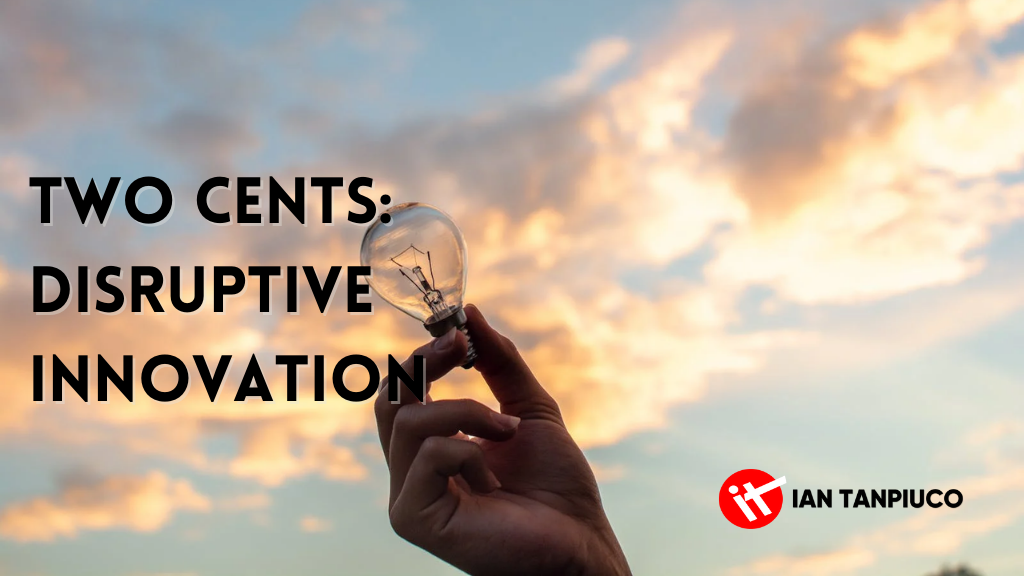
Two Cents: Disruptive Innovation
Introduction
Netflix recently release a TV show titled Blockbuster, it is a story of workers at the last physical Blockbuster store. As a previous Blockbuster employee myself, it is kind of humorous for Netflix to do this. For those who are not old enough, Blockbuster is the monolith of movie rentals, since movies during the 80s and 90s are fairly expensive, people just rent the movie, watch it and return it the next day, but this still requires a lot of money and time. Netflix, which was relatively small during that time, saw this opportunity to enter the movie rental services and its business model is a perfect example of disruptive innovation.
What is Disruptive Innovation?
Clayton Christiansen is the first person to coin this term, and in one of his interviews, he defines disruptive innovation as a product or service that was so expensive and complicated that only a few people with a lot of money and a lot of skill had access to it and disruptive innovation makes it so more affordable and accessible to the general public. Blockbuster was fairly for upper-class Americans who can afford to drive to the store and pick movies while the rest are okay with cable tv. Netflix tapped this market and develop a much cheaper alternative, online DVD rental, and instead of customers going to the store, Netflix will deliver it through the mail and just put it back on a mailer once you are done.
Although Blockbuster did this online rental service, it was too late, Netflix’s disruption in the movie-rental market attracted the middle and upper class due to its convenient and wide access to titles. Netflix continued to do disruptive innovation but this time to the streaming platforms, before Netflix became the behemoth of streaming, services such as Youtube and iTV were the mainstream, and people with faster internet and money can enjoy these services. Netflix understands the business model, and by using better servers, movies can be streamed without too much delay or buffer even in a slower internet connection.
Who is Jill Lepore?
One of the critiques of disruptive innovation is Jill Lepore who stated that the term disruptive innovation is frequently overused. In her 2014 article for the New Yorker, she stated some contractions on how disruptive innovation is a hoax, and the idealogy of this can actually create destruction. Her article provided a lot of insight and opinion on what Christensen wrote in his book, The Innovator’s Dilemma, she also provided her alternative view on the reasons a business fails. Moreover, In her interview, she stated that innovation is progress without thinking of the damage it can cost. She also cited that Christensen’s sources are often dubious and logic is questionable.
Although Jill Lepore’s idea has sense, I believe that Christensen’s observation is self-evident, Netflix is just an example of wide businesses that adapt to the idea of disruptive innovation. We can see this in automobiles and computing. The morality and the aftermath of this innovation are indeed bad to some degree but on a consumer level, small or startup businesses will find ways to innovate certain products or services in order to capture a bigger market. I also believe that Netflix will eventually be at the receiving end of this disruption if it failed to understand the market’s sentiment.
Check Educatorian

Ian Tanpiuco is an ESL and virtual assistant. With a decade of experience, he has become an expert in his field. Dedicated to helping others achieve their goals, Ian works tirelessly in the classroom or as a virtual assistant.